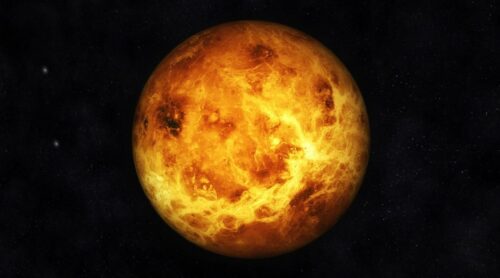Venus may have once had an Earth-like atmosphere making it easy to explore, but a runaway greenhouse gas effect has led it to becoming the hottest planet in the solar system, making it difficult for landers and orbiters to investigate the planet. In light of this, Yale astronomers have offered a novel approach to exploring Venusian geology.
Yale astronomy graduate student Samuel Cabot and professor Gregory Laughlin propose that up to billions of pieces of Venus have crashed on the moon. Their study has been accepted by the Planetary Science Journal.
At Yale, all astronomy graduate students work on one-year projects to get a sense of different areas of research within the department. For Cabot, this was one of his projects.
“For one of my projects, I worked with Professor Laughlin,” Cabot explained. “He suggested we investigate whether it is feasible to obtain meteorites from Venus that may currently be buried under the Moon’s surface.”
Cabot and Laughlin created a theoretical model to determine whether or not it was possible for pieces of Venus to end up on the moon. Billions of years ago, asteroid and comet impacts were frequent. On Venus, these catastrophic events may have dislodged as many as ten billion rocks and sent them careening through our solar system. While some pieces of Venus likely landed on Earth, they would have been corroded over time by our ever-changing planet. The moon, on the other hand, has no atmospheric or geological activity, resulting in well-preserved meteorites. Thus, the moon is where Cabot and Laughlin believe Venusian meteorites could be investigated today.
However, the ancient Venusian atmosphere would have to be thinner, like Earth’s, for meteors and asteroids to scatter pieces of Venus onto the moon. If the Venusian atmosphere had always been as pressurized as it is now, the scattering would be far less likely.
Cabot explained that their research is theoretical and doesn’t confirm whether there are pieces of Venus on the moon. It is dependent on an ancient Venus that looked quite different than it does now.
“Detectable amounts of Venusian material could be close to the surface, depending on when Venus experienced its runaway greenhouse effect and transitioned to its current climate,” Cabot said. “The overarching goal is to possibly one day find out what Venus was like in the past.”
The only way to confirm their hypothesis is to search for Venusian meteorites on the moon. Luckily, another trip to the moon isn’t far away.
The next moon mission is planned for 2024 with NASA’s Artemis program, where they hope to land the first woman and next man on the moon. Evidently, the Artemis program is an opportunity for astronomers to learn more not just about the moon, but other parts of our solar system including Venus. If Venusian samples are brought back from the moon, this could be a breakthrough for understanding Venus’s geology.

